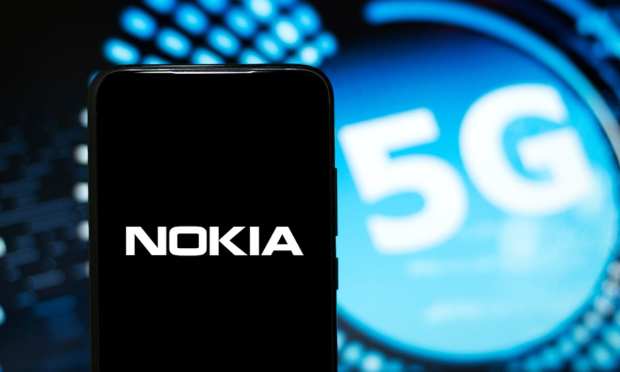Nokia Soars On 5G Propulsion

While most eyes have been on T-Mobile, Verizon and AT&T in terms of the 5G rollout in the United States, Nokia has been working globally to deploy its 5G solutions. The company was recently determined to have the most number of essential 5G patents of any operator by independent analysts at PA Consulting. That strong 5G focus has led to higher first-quarter network and 5G equipment sales – and a comparable net profit of €373 million ($452 million), which beat expectations of €90 million and spiked share prices by as much as 16 percent.
“This year, we are seeing great demand in 5G, and also in what we call network infrastructure, which is basically fiber connections to homes and offices,” Nokia Chief Executive Pekka Lundmark told Reuters.
Lundmark assumed his role in the middle of last year, and by the end of October had announced a restructuring plan that prioritized mobile networks – including 5G – along with wired infrastructure (read: fiber), cloud and network services, and Nokia technologies. Last month, Nokia announced that it was cutting up to 10,000 jobs as a cost-saving measure over the next 18 to 24 months, and would also look to invest more in research in digital and cloud infrastructure and 5G.
“I was particularly pleased by strong sales growth across our network infrastructure business group, driven by increasing demand for next-generation connectivity; good progress in mobile networks in securing full portfolio competitiveness; continued double-digit sales growth with our enterprise customers; double-digit sales growth in North America; and good net sales development for Nokia Technologies,” said Lundmark in a statement about the Thursday (April 29) earnings news.
In the same statement, the company said it expects its mobile networks division to show an earnings increase of up to 2 percent in the balance of 2021 and 5-8 percent by the end of 2023.
This month, Nokia announced the lock-up of several 5G contracts around the world. Last week, the company said it has been selected by Chunghwa Telecom to expand its 5G network in Taiwan. The agreement is part of the telecom operator’s goal of making 5G services available to 80 percent of the island’s population. In building the network, CHT will employ Nokia’s AirScale products, consisting of devices that can operate in all radio frequencies, including 5G.
Subsequent to that announcement, Nokia has said it is deploying a 5G network in the UAE in conjunction with Etisalat, a major telecom operator in the emerging markets sector, and that it is partnering with Telefonica Spain to help deploy 5G service to Spain’s residents by upgrading the telecom’s IP network. In the United States, Nokia announced that it will work with NewCore Wireless to use the Tribal Educational Broadband Service (EBS) to deploy wireless broadband connectivity – including 5G – to rural and underserved Native American communities.
Propulsion And Drag
While 5G is providing a much-needed dose of propulsion to Nokia, it also has the possibility to create a bit of drag. In the “risk factors” mentioned in Thursday’s earnings report, the company cited fierce competition in the 5G market and February’s C-band auctions as creating potential difficulties. That auction saw Verizon paying $45.45 billion, AT&T shelling out $23.407 billion and T-Mobile spending $9.336 billion for coveted licenses to operate on the C-band network, the slice of radio frequencies on which 5G networks can operate. In all, telecom companies paid a total of $81.17 billion for pieces of the band. That means there’s $81.17 billion of debt out there, which could have an impact on how much the companies have left to spend on Nokia’s 5G tech.
